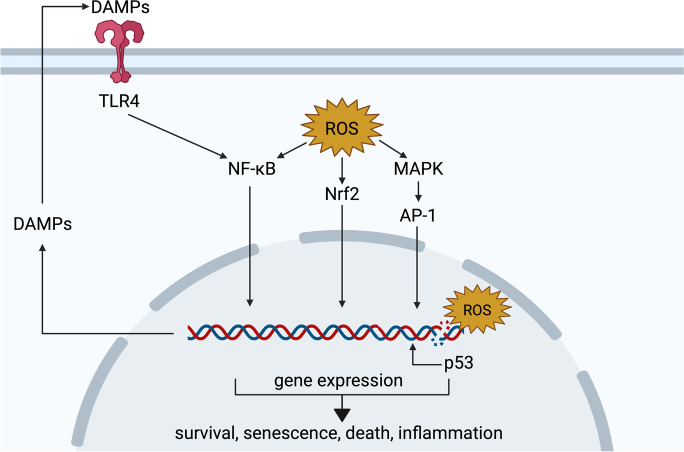Fig. 1.
Signaling pathways affected in hyperoxia. Excessive ROS modulate intracellular signaling, including via nuclear factor erythroid 2-related factor 2 (Nrf2), nuclear factor kappa-light-chain-enhancer of activated B cells (NF-κB), and mitogen-activated protein kinase (MAPK) pathways. In parallel, oxidative damage to DNA activates p53, which induces the transcription of target genes. In turn, damage-associated molecular patterns (DAMPs) upregulated by these pathways are released into the extracellular space, where they can bind receptors such as the toll-like receptor 4 (TLR4) and further activate the NF-κB pathway. Signaling events orchestrated by these and other pathways determine the outcome of hyperoxia-mediated oxidative stress and may include cell survival, senescence, death, and inflammation. Created with BioRender.com

